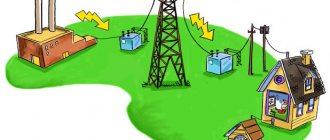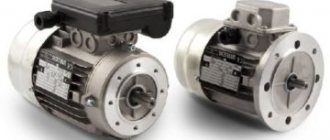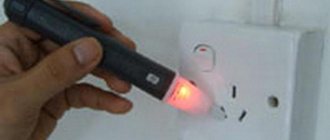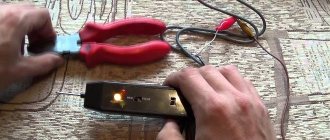read and discuss our publications in telegram
read and discuss in telegram
The rational use of resources has long been of concern to both world politicians and climatologists, as well as ordinary residents. Moreover, saving energy is not only money saved, but also a real contribution to reducing your own carbon footprint, and therefore a personal contribution to stopping the climate crisis.
How much does climate control cost: for example, 1 kW*hour of electricity usually costs 2-5 rubles. Its production at gas and coal stations releases from 300 to 1000 grams of carbon dioxide into the atmosphere. If electricity is used rationally, then each family can save up to 1000 kW*hours of electrical energy or several thousand rubles per year. In climate terms, that's hundreds of kilograms of carbon dioxide that won't be released into the atmosphere. In terms of all apartments and houses in our country, this amounts to tens of millions of tons of greenhouse emissions. And this is only electrical energy. And there is also water and warmth.
We have collected for you the top 16 tips for saving heat, electricity and water from Greenpeace project director Vladimir Chuprov.
Lighting
Approximately 15 percent of electricity in Russia is used for lighting, including the apartments and houses in which we live. Therefore, taking a closer look at how you organize your home's lighting can be the key to saving electricity.
What to do:
1 Switch to
LED lighting
In addition to the economic benefits, it is also a climate-friendly technology. Incandescent lamps are made from glass, tungsten and aluminum. They burn out faster, which requires significant resources for their production, not to mention the negative impact on the environment and climate. Mercury-containing energy-saving lamps require special disposal, as they are classified as hazardous waste.
2 Use dimmers (light controllers)
Dimmers are devices for adjusting the brightness of electric lighting devices. The word comes from the English “dim” - “to darken”. Such devices not only allow you to conveniently organize the lighting system, but also consume less electricity. In addition, you can change the brightness of the lighting depending on the time of day, the area of the apartment, and switch the lighting to standby mode without turning on the lamps at full power.
3 Change habits
In addition to replacing lighting fixtures, your habits are also important: do not leave lights on in rooms where they are not needed, try not to turn on several lighting sources in one room at once (for example, overhead and lower lights, backlighting).
Appliances
What to do
4 Buy energy-efficient household appliances
Efficient appliances are an equally important part of saving energy. Equipment of classes A, A+, A++ belongs to the high energy efficiency class. The energy efficiency scale itself consists of 7 main classes: from low G to high A. By replacing old equipment, you can reduce your costs, and therefore the climate footprint of electrical appliances, by up to forty percent.
5 Use the electric stove correctly
In addition to purchasing an electric stove of class A and higher, you can use simple life hacks that will allow you to save even more energy without losing comfort. For example, 10 minutes before your dish is ready, you can already turn off the stove. Due to the slow cooling of the burner, your food will be ready without unnecessary use of electricity.
6 Select an electric kettle of the required size
Pay attention to whether the size of the kettle matches your daily needs. If one or two people live in an apartment, then you can consider options with a minimum volume of an electric kettle, which will be enough for you. Is it worth mentioning that it is equally important to heat exactly as much water as required.
7 Select and operate the washing machine correctly
In the case of washing machines, a high energy consumption class
will help save up to fifty percent of water
. The best way to save energy and water is to fully load your washing machine.
Warm
A large share is spent on heat - up to 40% of all primary energy consumed in our country. A significant part of this heat is used to heat apartments and houses. Unfortunately, this heat is often wasted. This most often happens in uninsulated “cold” houses and, oddly enough, in houses suffering from “overheating”. In some cases, proper use of heat can reduce its consumption by half!
What to do
8 Install heat regulators
You can install them on heating radiators in your apartment. With the help of regulators, you will be able to independently choose the temperature in your apartment.
9 Replace cast iron batteries with more efficient radiators
Today you can easily find radiators made of various metals with increased heat transfer, which is 40-50% higher than that of traditional cast iron batteries. If you install radiators so that they are easy to remove, you will have the opportunity to wash them regularly, which also increases heat transfer. In addition, they take up less space in the apartment.
10 Insulate your apartment
If you live in a cold house, even small cracks in window or door frames can lower the room temperature by a couple of degrees, which is a lot. Insulation will not take much effort and money. More expensive methods - replacing ordinary windows with double-glazed windows (preferably not made of PVC) and others - will pay off in warmth and comfort, for example, in the off-season, when the heating is turned off and it is still or already cold outside.
11 Install apartment heat meters
Russian legislation allows installing individual heat meters in apartments and paying for heat according to their readings. So far, installation is not an easy procedure. Nevertheless, it is apartment heat meters that allow you to capitalize on all the heat saving tips given above and save significant money on proper heat consumption.
Water
The use of water - or rather, the preceding water treatment, heating, delivery and drainage - constitutes a significant part of energy costs in multi-storey buildings. These processes in buildings require approximately the same amount of energy as heating.
What to do
12 Install apartment water meters
Apartment water meters will not only help you calculate the exact amount of payment for the water you used, but also provide a good incentive to use more economically. After installing the devices, the payment will be significantly less than at home prices.
13 Install nozzles on taps
Thanks to these simple devices, you will be able to control water pressure and consumption, and it will be more convenient to use the taps.
14 Install a shower with an aerator
These are approximately the same devices as faucet attachments, which allow you to use less water without affecting the quality of its supply at all.
15 Check your plumbing for possible leaks
Old or damaged plumbing can also cause overuse of water.
16 Change your habits
Showering is more environmentally friendly than taking a bath, but if you shower, it shouldn't take hours. Turn off the water when you don't need it: when you shower, brush your teeth, shave or apply makeup.
The ability to control rising rent and light payments is, of course, a pleasant bonus for economical energy consumption. But careful use of energy is, first of all, your personal contribution to preserving the resources and climate of our planet. This is part of the Green Deal that our country needs to avoid a climate crisis. Thank you to everyone who supported our Green Deal petition.
climate energy
The essence of a “generous” offer
It could not have happened without a scientific explanation. All household electrical appliances consume active electrical energy, the consumption of which is calculated by household meters, and we pay for it.
Our washing machines, dishwashers, vacuum cleaners, and refrigerators are equipped with motors that use active electricity and load reactive (parasitic) electricity into the network. It is from this component that all kinds of “savers” are designed to save, compensating for the reactive load using a capacitor and some patented innovative solutions.
According to the manufacturers, the device performs the following functions:
- protects against power surges;
- converts reactive electricity into active electricity;
- saves energy.
To understand the principle of operation of the device, let's try to open the case. Inside “innovative devices”, as a rule, one finds:
- board with several resistors;
- LEDs (from 2 to 3), indicating that the device is connected to the network;
- power supply, for LEDs;
- diode bridge;
- black box - a film capacitor with a capacity of up to 5 microfarads (these were installed to compensate for reactive energy for fluorescent lamps with a power of 40 W).
The capacitor of the specified capacity is not capable of performing the declared functions. No innovative devices were noticed. Even if the “saver” is connected to the network, this will not affect the readings of the meter, which responds only to the active load.
Enterprises actually pay not only for active electricity, but also for reactive power, which creates additional load on the electrical grid. Devices are installed for them that compensate for unproductive costs. VARs (reactive power compensators) are circuits of capacitors with a strictly defined capacity corresponding to the load from specific equipment. Such devices are not produced for household consumers.
Cheap, economical, useful Energy saving light bulbs
We calculated that compared to a conventional incandescent lamp, one LED lamp consumes 84% less electricity. For 100 hours of operation, an incandescent lamp burns 7.5 kilowatts, or 40.35 rubles. I counted 20 light bulbs in our apartment. Each of them burns for about 300 hours a year. In total, we pay 2,421 rubles a year for all light bulbs. If we replace them with LED ones, we will pay 387.36 rubles.
LED lamps have a separate characteristic - light temperature. It ranges from warm light, like regular incandescent lamps, to cool light, like the sun on cloudy days. The light temperature is indicated on the packaging. General advice: cold light in public spaces, warm light in private spaces.
In order not to overdo it with the brightness of the light, choose lamps at the rate of 100-200 lumens per square meter.
Light bulb brightness. Higher is brighterLight TemperatureThis bulb produces about the same light output as a 40W incandescent bulb
LED lamps are more expensive than conventional lamps, but they also last many times longer, so they compensate for the price difference. Total savings - 2000 rubles per year.
How to save energy in a private home with electric heating
If the house is not gasified, then heating with electricity is a very convenient option. A wide selection of electric boilers, automation capabilities, cleanliness and safety attract home owners. There is only one drawback, but a significant one - it is expensive, and the question of how to save electricity in the house arises in full force. First of all you need:
carefully check the thermal insulation of the building, paying special attention to the roof, and correct any identified problems. External insulation of the house, installation of double doors, and repair of air ducts will help solve the problem of energy loss. install a two- or three-tariff meter, check the condition of the electrical wiring, calculate the electrical consumption directly for heating the home.. With a multi-tariff meter, you can afford to heat your home more at night, but during the day the temperature can be uncomfortable
To solve this issue, it is recommended to install a special heat accumulator. It accumulates cheap thermal energy at night and releases it into the system as needed during the day. Factory heat accumulators are quite expensive, but there are options for making them at home
With a multi-tariff meter, you can afford to heat your home more at night, but during the day the temperature can be uncomfortable. To solve this issue, it is recommended to install a special heat accumulator. It accumulates cheap thermal energy at night and releases it into the system as needed during the day. Factory-made heat accumulators are quite expensive, but there are options for making them at home.
Thermostatic valves must be installed on each radiator, with the help of which you can set the desired temperature in each room. For bedrooms and common rooms, the recommended temperature is 21 degrees, for the kitchen - 18 degrees, for non-residential premises - no higher than 16 degrees. Reducing the temperature by 1 degree saves up to 6% of thermal energy. You also need to ventilate the batteries regularly.
Saving by circumventing the law is expensive
But if purchasing a magical device with unclear operating principles only harms your budget, then ways to reduce electricity consumption using other ingenious tricks that allow you to disable the meter or illegally connect to the power grid are doubly or even triple dangerous. Firstly, these tricks can lead to electric shock and even fire. Secondly, such cunning people are periodically brought to light by employees of energy companies, who issue fines of tens of thousands of rubles and warn of tougher penalties for those who want to profit from “free” electricity. In addition, in this case, you will still have to pay for the energy consumed, so trying to save money by circumventing the law will result in serious trouble.
Expensive, uneconomical, useless Class A, A+ household appliances
Appliances with a high energy efficiency class seemed to me a good way to save money. This was one of the arguments to replace the refrigerator and washing machine with new ones.
It turned out that the savings here are not as obvious as it seemed from the label. Modern higher-class household appliances consume slightly less energy than lower-class appliances. It’s just that for the same kilowatt-hours it freezes harder, heats hotter and spins the drum faster.
How to pay housing and communal services
Energy efficient? Yes, but on the flip side: there is no less energy, just more efficiency.
For example, a refrigerator with energy consumption class B consumes 485 kilowatt-hours per year. A refrigerator with a similar volume and number of chambers with class A+ has a consumption of 272 kilowatt-hours per year.
For comparison, we tried to find the most similar refrigerators
The difference in consumption was multiplied by 5.38 rubles at Moscow tariffs and received 1,146 rubles in savings per year.
Tariffs on the Mosenergosbyt website
A new refrigerator costs 30,000 rubles. This means that from an economic point of view it will pay for itself in 30 years. So while the old one is working properly, replacing it will not bring tangible savings
But even if the old one breaks, you should pay attention to cheaper models. A difference of 10-15 thousand rubles is more beneficial for the family budget than saving 1000 rubles a year on electricity
https://youtube.com/watch?v=bzEEK7XN5a0
On timers
Another useful device that will allow you to turn off various equipment at night or when we are outside the house. The operation and essence of the timer is very simple - it can turn off or turn on a selected electrical appliance at a predetermined time. Thanks to this solution we can reduce unnecessary energy consumption in our home.
There are various types of these devices available on the market today. You can find and buy the simplest models, the cost of which is only 100-150 rubles, or slightly more complex devices, characterized by greater accuracy and the presence of many programs. It is worth considering purchasing a time programmer for the boiler, lighting, electronics and household appliances - these are the devices that consume the most energy.
Devices and systems for saving energy
Experts recommend the use of a two-tariff meter, especially for users of electric boilers. Not everyone knows that daytime and nighttime electricity tariffs are different!
At night, energy costs much less because less energy is consumed. Thanks to the two-tariff meter, you can set a washing machine, dishwasher, pressure cooker and other similar appliances to turn on at night.
After purchasing a meter, it is important to contact the management company, housing office or other organization that controls the provision of utilities to your home. The master will install the counter and legitimize the procedure
In addition, they produce a number of auxiliary devices:
The dimmer is installed on LED lamps. It regulates the power and brightness of the lamps, thereby saving on electricity. By the way, the device and lighting can be adjusted even from a distance; Motion sensors automatically turn off the lights if you forget to do so
It is important to set the device so that it does not turn off the light immediately, but five to ten minutes after the last person leaves the room; A household wattmeter will help determine the mains voltage and frequency, the electrical power of each device in an apartment or house. The obtained indicators and data will help determine how and what to save on.
Another option is a modern “Smart Home” system that will allow you to establish automatic control over energy consumption. Sensors take readings of energy consumption in each room and analyze the situation. The unit can be programmed to automatically turn electrical appliances on and off.
Separately, you can buy smart sockets (smart sockets), which are inserted directly into a regular outlet. They reduce energy consumption, are practical and easy to use.
Such devices allow you to remotely control each electrical appliance using a smartphone, tablet or computer via the Internet. In addition, they provide the ability to set different modes for turning the outlet on and off.
No. 5. Redecorating
You can save energy... with simple cosmetic repairs. If you paint the ceiling a light color or hang light wallpaper, the room will reflect about 80 percent of the sunlight. After all, the darker the coating, the worse it reflects light, therefore, to illuminate a room with a dark interior, more energy is needed.
Bright interior of the room
How to disassemble a switch
So, in the initial position there is a key switch, which is firmly fixed inside the groove. First of all, you need to prepare a tool in order to disassemble the case - a screwdriver with an indicator, it will be enough.
The external light switch is disassembled as follows
:
It is necessary to turn off the circuit breaker, which protects the wiring from electrical overloads and short circuits. Before dismantling, you need to make sure that there is no light in the house. And only after that you need to use a screwdriver with an indicator. Next, you need to dismantle the key if the switch is one-key or the keys if it is three-key or two-key. It does not matter what type of product is disassembled
To remove the key, you need to squeeze it with your hand from the sides (in the middle) and carefully remove it from the case. Sometimes the element “sits” firmly in the inside of the case, and in order to pull it out, you need to pick up one of the edges with a screwdriver. The next step is to remove the decorative frame and cover from the wall.
Sometimes it is attached to two miniature bolts from the inside; less often, the frame is held in place by grooves that must be gently pressed with a screwdriver to remove the fittings. Another option for attaching electrical accessories is using an additional element that is attached to the grooves of the caliper. Next, you need to pull out the “core” from the socket box. There are two screws on the sides of the case that hold the mechanism on a vertical surface. All you need to do is unscrew them using an indicator screwdriver. There is another option for holding the case in the socket box - with claws. They need to be loosened by slightly unscrewing the bolts on the sides that are responsible for adjusting the thrust angle. The next step is to disconnect the input wires. Phase, ground and neutral can be fixed to self-clamping terminals or to a screw terminal. In the first case, you just need to press the locking levers and remove the wires from the connectors. The clamp screws must be unscrewed using an indicator screwdriver and the wiring carefully removed.
That's all, there is nothing complicated, the switch has been removed from the wall.
We save electricity
- A microwave uses 50% less energy than a conventional oven.
- A TV, audio system, tape recorder, in standby mode, consumes an average of 10 watts per hour. They must be completely disconnected from the network.
- Mobile phone and laptop chargers plugged into an outlet consume electricity, even if you are not charging anything. It is better to turn them off, since all types of charging are famous for their energy inefficiency.
- The air conditioner should have a thermostat and turn off when the room temperature reaches the required level.
Electricity consumption is increasing every year. This is due to new and more powerful electrical appliances.
Modern people can no longer imagine life without a dozen units of household appliances.
Before we talk about saving, let's look at how electricity is used in a typical home or apartment.
| Device | Watt | Included hours per day | Consumption per month kWh | Costs per month rub. (4 rubles per kWh) |
| 6 bulbs, 60 watts each | 360 | 10 | 102 | 409 |
| TV | 100 | 10 | 28 | 114 |
| computer | 200 | 10 | 57 | 227 |
| electric kettle | 1500 | 0,5 | 21 | 85 |
| fridge | 225 | 15 | 96 | 383 |
| iron | 1500 | 0,5 | 21 | 85 |
| washing machine | 300 | 1 | 9 | 34 |
| vacuum cleaner | 700 | 0,3 | 6 | 24 |
| air conditioner | 1500 | 3 | 128 | 511 |
| mixer | 450 | 0,3 | 4 | 15 |
| oven | 1000 | 0,5 | 14 | 57 |
| Total: | 486 | 1.945 |
Energy saving – saving energy in the kitchen
Saving energy in the kitchen occupies one of the most important places in the overall scheme of energy-saving measures in the house.
It’s no secret that up to a third of all energy costs of a modern home are spent on meeting kitchen needs.
Unfortunately, the lack of basic knowledge about ways to save energy leads to irrational spending of the family budget.
First of all, let's consider the features of operating electrical appliances.
The highest energy consumption is found in a multi-compartment refrigerator, microwave oven, washing machine, extractor hood and electric kettle.
Similar recommendations are relevant for the dishwasher.
When operating the refrigerator, remember that every minute with the door open increases its energy consumption by three times.
- Do not forget about the need to select the optimal operating mode for the fume hood.
- When boiling a kettle or coffee maker, it is rational to use the minimum amount of water that is necessary.
Agree that bringing a full kettle to a boil several times a day to prepare two cups of drink is extremely uneconomical.
A few words about the correct operation of an electric stove.
To achieve a saving effect, you should adjust the power of the stove immediately after boiling water.
In addition, the cookware used must match the diameter of the burner.
- Replace your old electric oven with a modern microwave oven. Furnaces are constantly being improved. Heating food in a microwave oven is many times faster than in a conventional electric oven.
- Regularly descale your electric kettle. Scale creates a shell around the heating element, which prevents the rapid heating of water due to the low thermal conductivity of scale.
Electric kettle
| Consumption Power, W | Work per day, hours | Work per month, hours | Cost per hour, rub. | Cost per day, rub. | Cost per month, rub. | Working hours, % | Max. cost per day |
| 2200 | 0,25 | 7,5 | 7,7 | 1,925 | 57,75 | 1,04 | 184,8 |
15 minutes a day means boiling water three times.
1. It is better to replace the electric kettle with a gas one, and I wrote about this in the section about the microwave.
2. There is no point in pouring a full kettle, it wastes time and energy consumption. It is better to pour as much as needed, 15%.
Free, economical, useful Turned off electrical appliances
In a typical apartment, the following are constantly on: a TV in stand-by mode - consumes 0.01 kWh per hour, or 87.6 kWh per year, a personal computer with a monitor - 700.8 kWh per year, a laser printer - 438 kWh per year, home theater - 131.4 kWh per year, microwave with timer - 52.6 kWh per year.
We added it all up and multiplied it by the tariff. We received 7,588 rubles per year. You won’t be able to save exactly that much, because these devices will still work for some hours a day, but 3-5 thousand rubles a year is quite enough.
In order not to run around the house every time and not pull out appliances from sockets, you can call an electrician once and ask to connect the refrigerator socket to a separate circuit breaker in the panel. Then the remaining devices can be turned off in the panel before leaving home.
Shield with a separate machine for the refrigerator
Selection of electrically efficient devices
According to the laws of international standardization, all household appliances published in recent years are divided into classes according to their energy efficiency properties. The upper class also has subcategories: type A+ or A+++. A family machine with index A and similar subcategories with pluses uses electrical energy more economically. It is worth giving distinction to fighters for economic views. The further the letter is from the first places of the index in the Latin alphabet, the greater the electricity consumption will become when using the unit. Equipment marked d and e actually does not save anything, but it does not quickly “waste” either. But it is better for thrifty owners to leave class G equipment in the store.
Advantages of two tariffs Everyone knows about daily changes in the cost of electricity, but few use this information. You can pay less for electricity used at night than for electricity used during the day. All you need to do is buy, identify and officially secure a metering device with 2 relays that switch depending on the appointed hour. “Left” devices to reduce costs. Recently, savings lovers were hit by a nine-point wave from a marketing company glorifying small special boxes for saving electricity. According to the assurances of marketing figures, the result from their implementation was bound to be amazing. There were countless numbers of people willing to buy. We bought it, tested it - no economic results. No benefit was found, but no harm was found either. They only performed the function of voltage stabilizers flawlessly. They lured the buyer with an imaginary opportunity to save reactive power. They just forgot to say that the household meter does not register the insignificant reactive component created by induction home appliances.
Don't waste the light
- Turn off the lights when moving from room to room. Install thermal motion sensors that will turn off the lights for you.
- Use local lighting: backlights, floor lamps, sconces. For example, in order not to turn on the main light sources every time, it is better to install LED strip lighting in the room.
- Remember that cleanliness is the key to saving. Dirty windows and dusty lampshades reduce the level of illumination in the room by up to 35%.
- When renovating, keep in mind that light walls and furniture will reflect up to 80% of the light flux, and dark ones - only about 12%.
- Replace incandescent light bulbs with energy-saving and LED ones. Replacing just one lamp will save about 1,000 rubles per year.
Let's take Moscow, for example. 1 kWh in the capital costs Tariffs for electric energy for the population and equivalent categories of consumers in the territory of Moscow, with the exception of the Troitsky and Novomoskovsky administrative districts of 5.38 rubles. Let’s imagine that in three apartments, three light bulbs are lit for eight hours a day: LED, energy-saving and incandescent. For a more objective picture, we will choose lamps of such power that they provide approximately the same level of illumination. And this is what we get.
It turns out that after two months, one energy-saving lamp will allow you to save 40 kopecks every hour, and 10 light bulbs will save 4 rubles.
No. 8. Window insulation
First of all, seal all the cracks (ideally, of course, it is better to install modern double-glazed windows, preferably with energy-saving glass). After all, windows account for the lion's share of heat loss (up to 50 percent). In addition, during the winter you can cover your windows with thick night curtains.
It is also advisable to insulate the loggia/balcony and entrance doors. It is also worth thinking about insulating the floors in the apartment.
How does energy-saving double glazing work?
Saving energy in the kitchen
Special attention is paid to electrical appliances in the kitchen. The refrigerator should not be placed next to a stove or radiator.
Otherwise, it will heat up quickly and turn on more often. This leads to breakdowns and high energy consumption.
For the same reason, do not put hot food inside and do not open the door again. In addition, to save electricity, you can set the refrigerator to a less cold temperature.
Do not heat rooms with burners turned on. This is dangerous and unprofitable. It is more practical and economical to heat food in the microwave than on the stove. By the way, a gas stove consumes less energy than an electric one.
But owners of electric burners will also be able to save money and achieve lower electricity bills if they follow simple recommendations:
- When cooking, after the water has boiled, reduce the burner to low;
- When cooking vegetables, use less water. They will cook even if the water does not completely cover the food;
- When cooking, close the lid tightly, then energy consumption will decrease by 2-2.5 times! If you do not close the lid completely, the consumption will remain the same as with the pan open;
- Choose pots and pans with a diameter that matches the diameter of the burner and with a flat, thick bottom. Otherwise, energy consumption will increase to 60%;
- Do not use aluminum or enamel cookware or Teflon-coated pans for cooking. Such products are not economical. It is better to choose stainless materials.
When using an electric kettle, clean the device in a timely manner and remove scale. Due to scale and deposits, the water takes longer to heat up. Buy a thermos to go with the electric kettle. In order not to heat the kettle because of one cup of tea or coffee, you can pour the boiled water into a thermos and use boiling water if necessary.
How to save electricity in a private house with an electronic meter
Recommendations to help save energy in a private home:
- use of special induction, electrode boilers;
- the use of timers, thermostats that control the operating mode of electrical appliances;
- introduction of technologies that allow remote control over electricity consumption;
- regular cleaning of the electric kettle and water heater from accumulated scale;
- use of a sink with an installed valve for economical consumption of hot water;
- using a wood-burning stove instead of an electric stove (this method is relevant in houses located near forest plantations);
- operation of a solid fuel heater with a cooking surface in order to save energy;
- use of all household appliances with energy saving class A;
- the use of induction cookers with the function of heating food (the efficiency of such devices is about 90%);
- use of low power lamps;
- introduction of photovoltaic lamps in the yard;
- installation of sockets with timers that program the operating time of an electrical appliance.
Adjusting the Thermostat
A poorly calibrated thermostat can cause rooms in your home to overheat. How do we usually deal with stuffiness? That's right - we open the windows, and electricity is wasted. The best solution is to adjust the thermostat to suit our needs.
Each thermostat step increases your electricity consumption by about 3-5%, so the savings can be huge. Unnecessary energy consumption can also increase the water heater, especially models that constantly maintain the selected temperature (storage heaters). It is worth choosing energy-saving products, that is, those that heat the water only during its use (instantaneous heater).
Saving on used household appliances
Turn off unused household appliances
Even phone chargers need to be unplugged. They also, albeit a little, consume electricity.
You need to be especially careful about turning off electrical appliances if you do not have two tariff electricity meters installed. In this case, turn them off at least at night - this way you can save at least a little. Additional information about ways to save money in the household can be found on our website Sizhu-doma.ru.
Loading the washing machine during the night tariff
If you have already installed two tariff electricity meters in your home, then you can easily turn on the washing machine and dishwasher at night, during the period of the night tariff (from 11 pm to 7.00 am).
"Global" washing or intensive cooking, especially using an electric oven, can be done on weekends or holidays. At this time, the “night rate” also applies.
Ironing also needs to be done on weekends, when the night electricity metering tariff is applied.
Personally, in order not to keep freshly washed laundry unironed for a whole week, and to prevent the laundry from drying out, I iron it in the morning, before 7.00 am.
We get up early, so I can easily spend 15 - 20 minutes ironing a few things. This allows me to save energy and use my time rationally.
Rational use of the washing machine
When you do laundry in an underloaded machine, you're wasting both energy and laundry detergent. When washing in an overcrowded machine, you run the risk of not washing your items, which will result in the need to re-wash.
We control the ice level in the refrigerator for timely defrosting
The refrigerator is also a serious electricity hog. Especially if it does not have a self-defrosting system, and a huge layer of ice freezes in the freezer or on the walls of the refrigerator.
The more frozen ice there is in the refrigerator, the more electricity it spends to ensure its operation.
Therefore, the more often you defrost and wash the inside of the refrigerator, the less energy it consumes.
I think you don’t need to be reminded that you can’t put cold or even hot food in the refrigerator. When hot food cools down, the refrigerator is forced to spend more electricity to cool it, and the condensation resulting from the temperature difference ultimately freezes on the walls of the refrigerator, which speeds up the need to defrost it.
Do you cook on an electric stove?! When cooking, try to use utensils that best match the size of the heating parts of the stove.
If the heating element is smaller than the size of the pot or pan, you will need more time to cook your food.
Also, if the heating element is larger than your pan, the food will, of course, cook faster, but you will waste electricity.
And yes, having a lid on a pot or frying pan speeds up the cooking process, and therefore reduces energy consumption.
Another little tip: turn off the electric stove about 10 minutes before the end of cooking. Your food will cook perfectly on the heated element - it takes a long time to cool down, which allows you to continue cooking by inertia.
We purchase energy-saving household appliances
When purchasing household appliances, be it a washing machine or a dishwasher, or a bread oven, or a food processor, or a water heating boiler, try to choose energy-saving appliances. Fortunately, the choice is now huge - for every taste and color.
And finally. Walk around your apartment, look at what electrical appliances you have working, it’s quite possible that you will find a couple or three more ways to save energy in your home.
Useful articles, be sure to read:
Why do you need to install water meters, and what are the savings from installing water meters? Life hacks for housewives: quick cleaning of the house Life hacks for housewives: what you can save on at home How to save on food
Correct use of electrical appliances
If you do not have a two-tariff meter installed, turn off gadgets before going to bed. Charge the equipment during the day until the batteries are full. Defrost your refrigerator regularly if it does not have an auto-defrost system. Do not place it close to the wall or heating devices. The correct location of the refrigerator is the key to its long service life and energy savings.
Fully loading the washing machine drum also saves energy. It is better to collect a lot of things than to regularly “drive” the machine idle. Instead of two or three times, you will use the machine only once a week. At the same time, do not overload the drum: overloading also leads to increased energy costs. If there are no heavy stains on the linen and clothes, wash them at 30C. Washing at 40C increases electricity consumption by more than 30%.
Do not allow the dust container in your vacuum cleaner to overfill. If the bag is full, the vacuum cleaner uses more electricity. An iron is a device that consumes a lot of electricity if it works constantly. You can save energy by carefully unplugging it after heating. It retains heat for a long time, so you can iron even after it is turned off. Do not iron at high temperature unless necessary.
If your apartment has an electric stove, keep an eye on its burners. You need to place pots that are the right size on them. The bottom of the dish should be smooth, without bends. When cooking, there is an easy way to reduce heat loss and cook food faster. Keep the pan or pot covered.
Fans and air conditioners should be cleaned regularly, and household appliances should not be left in standby mode. This applies to laptops, printers, routers, TVs and microwave ovens of the latest generation. Buy outlets that have a timer. Such measures will provide savings of about 200 kilowatts per year.
Using a magnet to save money
Older models do not have a seal that prevents magnetization. However, this does not eliminate the risk that a testing group will appear in the private sector to check the level of magnetization of the meter. Factory devices have a neutral magnetic field, and those on which the trick with a magnet was used have a modified
Therefore, this method must be used with caution
To change the readings of the device, you need to use only strong magnets - neodymium. They easily pay for themselves: small parts in a set of 20 pieces. cost about 1000 rubles. Neodymium magnets are sold in a special tight case, which is no coincidence: magnetic elements are easily attracted to iron from a distance of 30 cm or less. To disconnect the magnetic strip from the iron, you need to have fabric or polypropylene between these elements.
How to save electricity in a private home using a magnet? The magnet needs to be wrapped in cloth, then attached to the counter. To prevent the glass elements from breaking and dents appearing on the body (the magnet is attracted very quickly), you need to put your hand between the counter and the neodymium when bringing it in, and then slowly remove it.
Multi-tariff meters
Updated meters operate at different tariffs. Depending on the region, there are two or three modes - day and night or day, evening and night. Depending on the mode, kilowatts of energy cost differently. Since thermal power plants produce 30% less energy at night, the rate per kilowatt is reduced at night. Therefore, washing machines, heating devices, and air conditioners should be turned on at night. This is especially true for houses with an electric boiler if there is no gas for heating.
Multi-tariff meter
Magic button saves your budget
“When you leave the room, turn off the light bulb!” - your mother or grandmother once reminded you, teaching you to save the family budget. This golden rule still works today, but it should be remembered that devices operating in passive mode or simply plugged into a charger also consume extra kilowatts. In addition, leaving a smartphone or other gadget “charged” creates a fire risk.
On average, following this “golden rule” allows you to save up to 5% and, in addition, protect your property and other property from the risk of fire.
Leaving the room and turning off the lights saves 5% of electricity
And if you are forgetful and keep forgetting to press the magic “on/off” button, sensors that monitor the power on and off will help you.
The cost of such a device, which can be easily installed by an electrician servicing your home, starts from 300 rubles. In addition to saving money, sensors warn you about appliances that have not been turned off on time and eliminate the need to give up your daily activities and rush home to make sure you haven’t forgotten to turn off the stove or iron. No tags for this post.










